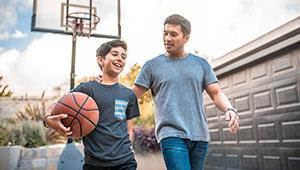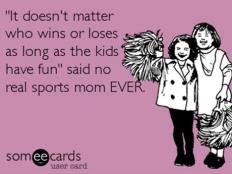
Most everything we do with our bodies physically can be classified as skill. Things like eating with a fork, riding a bike, throwing a ball, etc. Skill is very important for any athlete who wants to become great at their sport and position within. So, what is skill? More specifically, what is skill physiologically?
Skill is the development of myelin—an insulating layer of fatty-like tissue that forms around nerves. In his book, The Talent Code, Daniel Coyle describes myelin as, "a dense fat that wraps itself like electrical tape around a nerve fiber, preventing the electrical impulses from leaking out."
How Myelin Works
When athletes commit to deep, concentrated practice, they fire signals to their nerves, thus growing myelin around those nerves. The more myelin they produce, the more skill, or muscle memory, they develop. The more the nerve fires, the more myelin wraps around it. The more myelin wraps around it, the faster the signals travel, creating more muscle memory.
Studies have shown that myelin can decrease the wait time between nerve firing impulses and increase our nerve processing time. This increase in processing speed and decrease in wait time combine to boost our brain's overall information-processing capability exponentially, according to some experts.
Sound strange? I always wondered why one athlete looks smoother than another. It is often said that the better performer is just a more natural athlete. It's just genetics. The study of myelin is one physiological explanation of how one athlete becomes better than the other at the same task.
How Myelin Grows
Myelin controls and regulates velocity of the nerve impulses or signals so they reach the synapses at the optimal time. We grow myelin every day with everyday tasks. We do it as we learn to drive a car, hit a baseball or type on a keyboard; anything we do mechanically, repeatedly with our physical bodies.
When it comes to building myelin for athletes, the focus must be on how to practice. Each practice must be very concentrated, deliberate and even slow. Athletes must allow themselves to make mistakes, go back, slow down and make corrections deliberately.
Patience Makes Perfect
Can you remember how much concentration it took for you to learn to tie your shoes? Your head was down, eyes peering at your laces, at each slow loop, deliberately thinking about each movement. You were a kid, but you controlled your nerve impulses and their firing speeds. Now that you're older and more experienced, your movements are so smooth and natural that you can tie your shoe without looking and have a conversation at the same time.
Athletic skill and muscle memory are developed and honed by making mistakes and taking note of those movement mistakes. We don't like making mistakes, but they make you a smarter athlete and a better mover at that particular skill.
When learning a new skill, we need to slow down and allow ourselves to make errors. Struggling to learn a skill is not an option—it is physiologically and neurologically required. We need to make mistakes so we can pay attention to the movement and then perfect the skill. Find that "zone of struggle" and allow learning to happen. The more deliberate we are with this process, the faster and the more we learn.
 Find sports for kids near you.
Find sports for kids near you.
About the Author

Visit Kenneth Taylor's website for speed training books for athletes, parents and coaches. Subscribe to TheSpeedDr1 on YouTube for free speed training videos. Kenneth D. Taylor is a SAQ pioneer and Sport Speed Expert who lives in Southern California and has trained over 5,000 athletes over 20 years. He holds a degree in Exercise Physiology and Sports Science. He was a world class track athlete and played in the NFL for the 1985 Chicago Bears Super Bowl XX team and the San Diego Chargers.









Discuss This Article